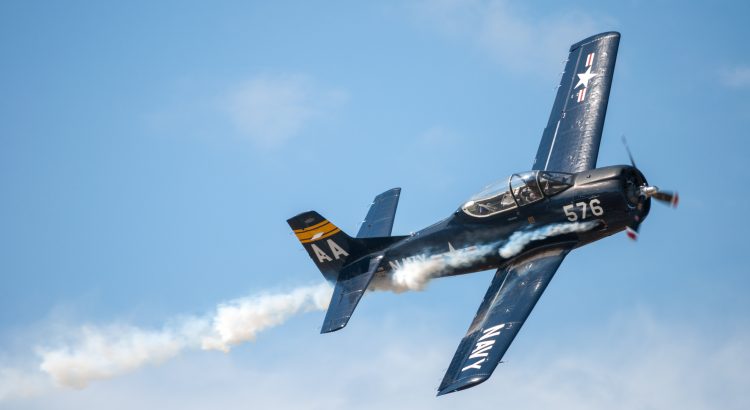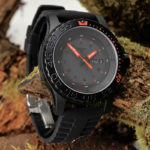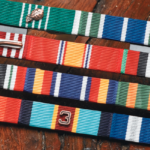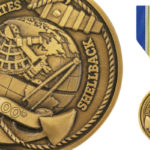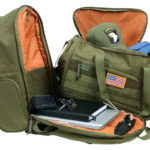Individual Awards for Air Medal Devices
Still on the general subject of ribbon appurtenances, we shall now turn our attention to the case of Air Medal Devices, the classic example of how many different ways the Services can specify the wearing of devices, both now and in the past.
As mentioned in the previous section, both the Army air medal and the Navy air medal feature the bronze letter “V” but it is in denoting additional awards that the Services have demonstrated some real Yankee individuality. Although the Army and Air Force systems, i.e., numerals and oak leaf clusters, respectively, are totally different, they are, at the very least, straightforward and easily understood. It is the Navy, then, that has entered a new dimension by establishing two very distinct categories, strike/flight and individual award, for all awards of the Air Medal, both initial and subsequent.
For individual Air Medal awards, a small (3/16″ diameter) bronze star was used to indicate the first award while the traditional 5/16″ gold stars were used to denote additional individual awards.
Strike/flight awards of the Navy Air Medal were (and remain to this day) indicated by bronze block numerals worn on the right hand orange stripe (as seen by the viewer). The two different categories created a situation in which a device is used on a Air Medal ribbon to denote the INITIAL award of a personal decoration, the first in American medallic history.
For purists, it will be noted that the Merchant Marine Gallant Ship Citation Bar is issued with a silver seahorse device and the Navy “E” Ribbon carries a silver letter “E” upon initial issue. Both of these, however, are unit awards rather than decorations.
After Vietnam, in response to the large number of individual Air Medals issued during the conflict, all of the star devices were discarded in favor of gold block numerals, placed on the left-hand orange stripe (as seen by the viewer) to denote the total number of individual awards of the Air Medal. The above change was combined with the bronze strike/flight numerals described above to provide a simpler means of displaying the true number of Air Medals earned by the recipient.
Air Medal Strike Flight Numerals
Use of the gold numerals was not universal, however, and was resisted vigorously by those who clung tenaciously to their gold stars and managed to reverse the policy and return to the star devices in 1989. So, with the demise of the gold numeral, there was now another body of dissatisfied Vietnam-era pilots who earned the medal in great profusion, but now had great difficulty with the cumbersome 5/16″ gold and silver stars. However in the military equivalent of a happy ending, the Navy came full circle in 2006 and reverted to the gold numerals which, it is hoped, will end the saga once and for all for the Air Medal.
Regarding the other Naval Services, the Coast Guard uses ONLY the 5/16″ gold and silver stars to denote additional awards of the Air Medal for all categories of achievement in flight. However, strike/flight awards received while serving with Navy units may be worn on the ribbon as prescribed above. And to close the subject, the Marine Corps follows the Navy’s lead in using gold and bronze numerals and the letter “V” on the Air Medal ribbon.
